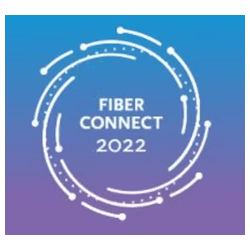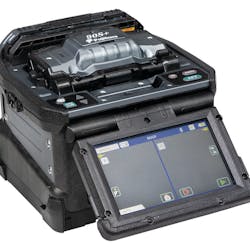Work force management is the art of getting a number of things right: The right tech, the right information, the right equipment, the right tools and the right timing.The goal is efficiency, and the stakes are high: In a perfect world, a technician with the precise skill set necessary to do the job at hand will leave his home (no need to pick up work orders, equipment or supplies since they were loaded at the end of the previous shift) and take the most direct route to the subscriber's home. If, however, there is a traffic jam or other obstacle, a new route is automatically provided.If a priority call that utilizes that tech's skill comes in -- say the Internet is down at a nearby hospital -- he is rerouted. Once he arrives and begins working at the customer premises, all necessary data -- some in the form of videos -- is automatically provided. There also is information on the customer's billing status, work history, neighborhood conditions and potential upsell opportunities.Much of the information in this example and others like it is being dispatched today. However, the industry is not fully leveraging the information they are collecting or the platforms they have in place to disseminate it. The bottom line is that work force automation (WFA) -- a part of work force management -- is a sector in the throes of great change as the operators simultaneously deal with the massive shifts in what they do and try to find ways to turn these new technologies into tools.Andy Parrott, the vice president of technical operations for Suddenlink, said the focus is more fully moving from an era in which WFA focused on subtly improving how well prepared a field tech was to one in which the impact is more readily felt by subscribers. For instance, FFA can lead to far narrower service call windows and provide portals in which subscribers can check on when that tech will arrive, much as flight status can be checked at carrier sites.This is a competitive necessity. "Previously, the work force automation relationship was between the dispatcher and the front line staff," Parrott said. "What's exciting is that we are integrating the customer experience and have a workforce automation system that reaches out to customers."Cable operations have evolved gradually in a couple of ways. Of course, they add services and platforms as they become available over time. Most MSOs also are the product of acquisitions and mergers of the decades. Thus, many of the operational elements -- network operations, billing, inventory, customer relationship management, field operations and others -- are siloed, discreet and the product of different vendors.This means that the important data is caught in a Tower of Babel -- or several. Mark Ericson, a partner at The ECAM Group, a corporate account management firm, said this a "swivel chair" situation in which the dispatcher is the pivot point and is charged with collecting relevant information from the various silos and relaying key information to the tech.Needless to say, automating that process -- replacing the swivel chair -- would increase efficiencies greatly. That, in essence, is the point at what the industry is looking at now.Progress Being MadeEricson said progress has been made on the billing software side. It is a tremendously complex task, however. For instance, Ericson said, the amount of data in the GIS systems -- including plant maps, strand CAD maps, weather and traffic data, GPS data and customer locations -- can be captured in various database levels. That data must be automated and a way found to match it with appropriate billing and other data. Finally, the salient information for the field tech must be distilled and sent. This is about as complex as it sounds. "It's a long way off, but it definitely is being pieced together now," Ericson said.There are several issues that must be worked through along with confronting the core technology issues. Operators must decide if they want to build these systems in-house or go with outside vendors. The former is a lot of work and requires expertise that few MSOs have on staff. The latter is costly and could give MSOs fits because of the sensitivity of the data. Finally, vendors of such solutions may not want to deal with operators' existing systems, which often are proprietary.Tom Gorman, the vice president of field operations for Charter, said field force automation vendors often ask MSOs to use their entire solution. The problem is that that would orphan existing platforms. "The fact of the matter is that we have enough 'piece parts' in place," Gorman said. "They want us to invest in new ecosystems, but what we need is APIs [and other ways] to allow existing elements to speak to each other."Eventually, industry-wide standards likely will be developed. That, Gorman said, isn't a top agenda item for the near future. (Gorman, along with Parrot and Ericson, will offer a workshop titled The Next Generation of Workforce Automation at Cable-Tec Expo 2011 next month in Atlanta.)Despite the likelihood that WFA likely will remain proprietary for the next few years, the industry -- which stands to save millions of dollars on the cumulative efficiencies introduced by even small improvements -- is making significant progress. "I think cable is probably leading the pack, at least from our perspective," said Rich Chinitz, the director of marketing for TOA Technologies, a field force management vendor to Suddenlink. "It is our largest customer. We are seeing cable companies embracing next-generation field force solutions to radically change the services they deliver."Carl Weinschenk is the Senior Editor for Broadband Technology Report. Contact him at [email protected].






